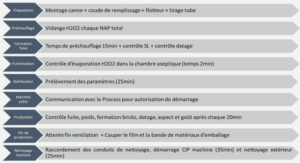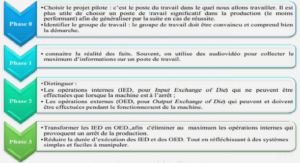The functional behavior of a structural component is heavily influenced by the residual stress distribution caused by the machining process. It is known that fatigue life, deformation, static strength, chemical resistance, and electrical properties are directly influenced by the residual stresses (Brinksmeier et al., 1982; Capello, 2005; El-Axir, 2002; Young, 2005). It is therefore necessary to understand and control the residual stresses for the functionality and longevity of engineering structures.
The residual stresses are defined as those stresses that remain in the machined workpiece after machining is completed and a return to the initial state of temperature and loading is achieved. During machining, the formation of residual stresses is induced under the action of the three following mechanisms (Guo et Liu, 2002b):
• Mechanical deformation: non-uniform plastic deformation due to cutting forces;
• Thermal deformation: non-uniform plastic deformation induced as a result of thermal gradient;
• Metallurgical alterations: specific volume variation resulted from phase transformation.
It is worth mentioning that the first two mechanisms are always present and occur simultaneously in most cutting processes while the third one depends on the amount of heat generated during the cutting, as well as the cooling rate.
Mechanical deformation induced in superficial layer material due to the applied mechanical load may produce both tensile and compressive residual stresses (El-Wardany et al., 2000). In fact, the superficial layer material of the workpiece is subjected to loading cycles of stress versus strain along the cutting direction, The material element first experiences compressive plastic deformation ahead of the advancing cutting tool and then tensile plastic deformation behind it. As a result, this region is the seat of two consecutive modes of deformation and the predominant one, after cutting, determines the final state of residual stresses (Wu et Matsumoto, 1990). Since the superficial layer material is constrained by the bulk material beneath, surface compressive residual stress will be produced, after relaxation, if the loading cycles give rise to a tensile plastic deformation, and vice versa .
In dry cutting, the superficial layer material of the workpiece absorbs more heat and tends to elongate more than the bulk material beneath. After cutting, the hot superficial layer remains hot because the cooling starts mainly from the bulk material by conduction. Since its thermal expansion is constrained by the bulk material beneath, large compressive stress is generated in the surface material. If this compressive stress exceeds the yield strength of the surface material, the superficial layer will plastically deformed under compression stress, which in turn, surface tensile residual stress is produced after cooling (El-Wardany et al., 2000; Shi et Liu, 2004).
As mentioned above, if the temperature induced during cutting and the cooling rate are both high enough, phase transformation occurs on the newly generated surface which results in alteration in grain structure that, in turn, can modify the physical and mechanical properties of the workpiece material (Oh et Altan, 1989). These non-uniform alterations between the surface layer and the bulk material can induce residual stresses. The type of residual stresses is related to grain size in the new phase. If the new phase induces larger grain size, the surface layer tends to expand. Since the expansion is constrained by the underlying material, that has no phase transformation, compressive residual stresses are generated in the surface layer and tension stresses are generated in the underlying material (Brinksmeier et al., 1982).
The residual stresses can also be classified into three types according to the length scales over which they act (Lu, 1996):
• The macrostresses (Type I) vary over large distance (several grains or more);
• The microstresses (Type II) vary on the length scale of grains. They are produced by variations between different phases or between inclusions and matrix;
• The stresses at sub-grain scale (Type III) vary over several atomic distances within the grain. They arise from defects, dislocations and precipitates.
Residual stress measurement techniques
It is important to keep in mind that residual stresses are not directly measurable; instead the stress determination require measurement of intrinsic properties, such as elastic strain, displacement or some secondary quantities, such as speed of sound, or magnetic signature that can be related to the stress (Withers et al., 2008).
Residual stress measurement methods could be classified as direct and indirect methods. Indirect methods rely on deformation measurement due to the disequilibrium of the residual stresses, which are relaxed by removing a thin layer of stressed material from the workpiece. By measuring these deformations, the residual stresses that exist in the removed layer could be found. On the contrary, the direct method is based on the measurement of physical quantities that are related to the existing stresses (Brinksmeier et al., 1982). Another classification of residual stress measurement methods namely destructive and non-destructive methods is also proposed in the literature.
INTRODUCTION |






